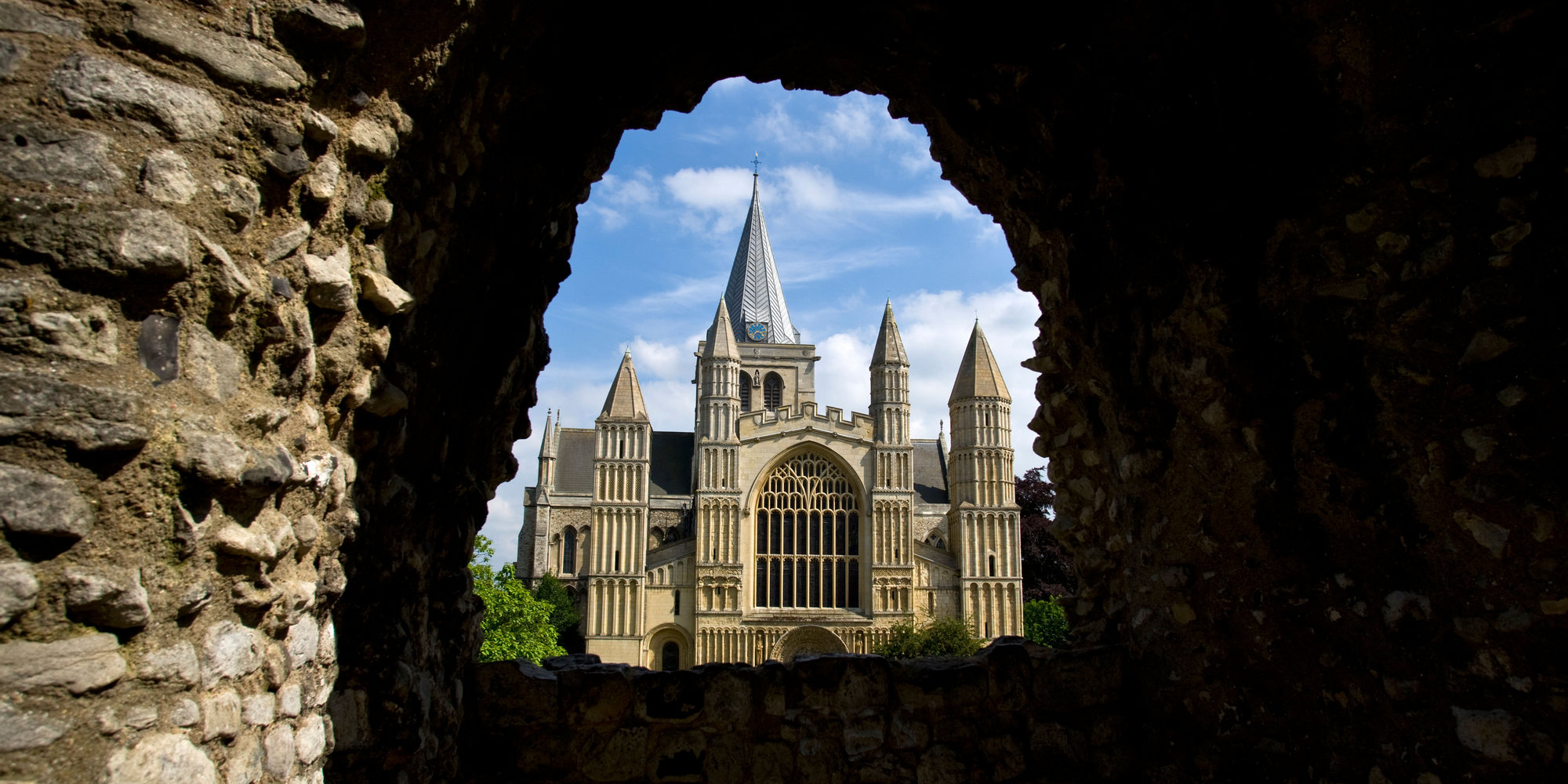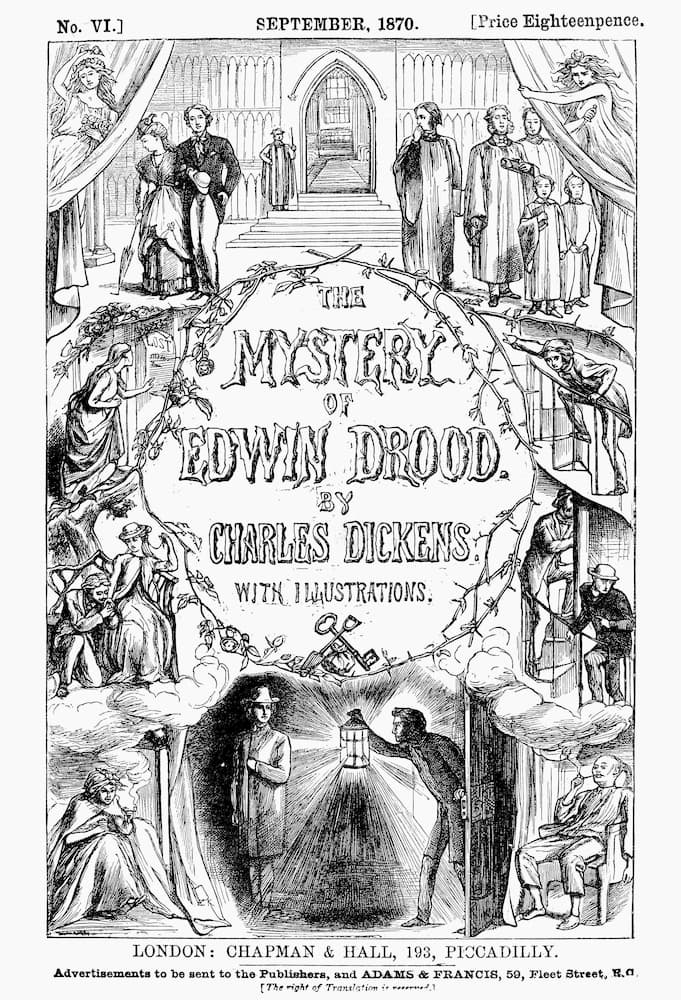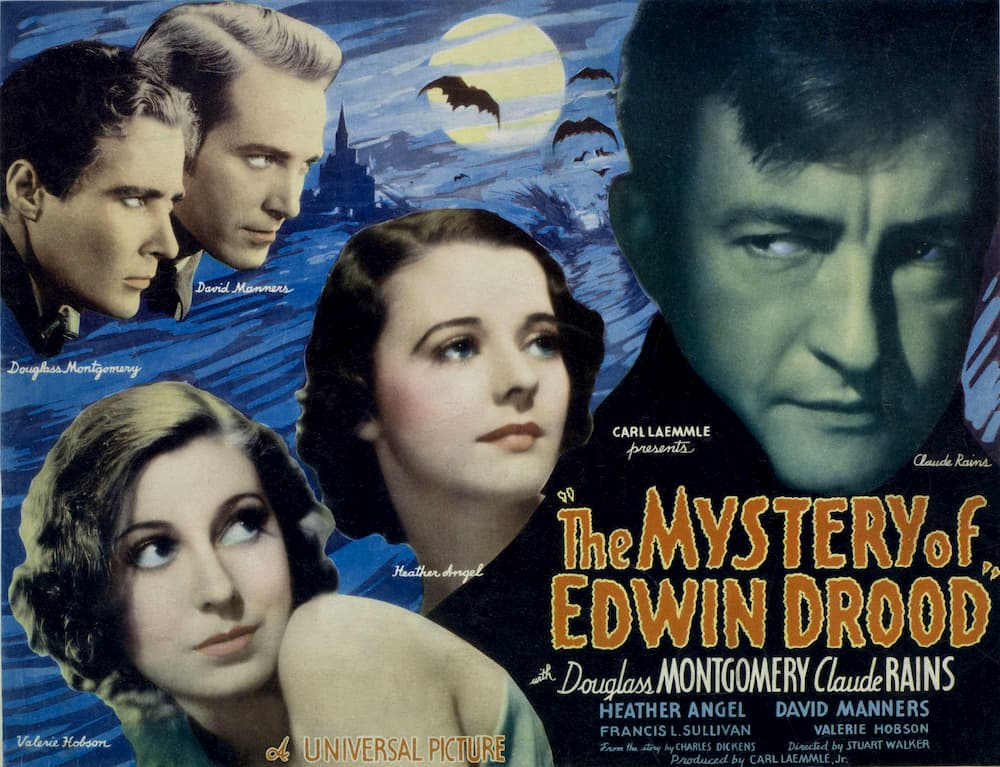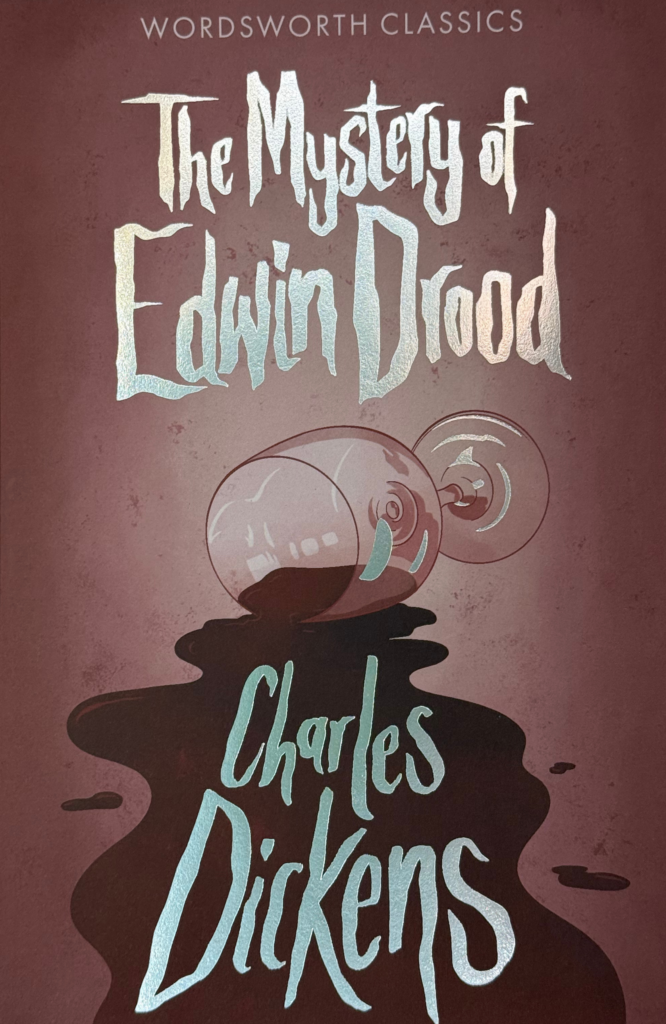
Book of the Week: The Mystery of Edwin Drood
David Stuart Davies looks at Charles Dickens’s last, unfinished, novel
The real mystery of Edwin Drood concerns his sudden disappearance, which raises the question of whether he is dead or alive, for no body is discovered. If dead, has he been murdered and if so, by whom? Sadly, Charles Dickens died before he was able to answer these questions in print. The author had only managed to complete six of the planned twelve instalments of the story before he was taken ill at his home in Gad’s Hill in July 1870. He died shortly afterwards. He was 58.

Cover of the final part of the unfinished series.
Despite being only half finished, the story is still of great interest, remaining one of Dickens’ most popular books. With this novel the author was moving into fresh literary territory by creating a murder mystery tale. It is set chiefly in the cathedral city of Cloisterham (closely modelled on Rochester). John Jasper leads a double life as a cathedral choir master and an opium addict, travelling secretly to a London opium den to satisfy his craving. In researching the novel Dickens, accompanied by a police officer, visited such an establishment to make sure he was able to describe these places and their clients with accuracy. Edwin Drood, Jasper’s nephew, was betrothed as a child to Rosa Bud – the ‘wonderfully pretty’ heroine. Although the couple remain engaged and have an affection for each other, they are not in love, having a relationship more like brother and sister. However, Jasper harbours a deep passion for Rosa and resents Edwin.
The situation comes to a head on Christmas Eve. Unknown to Jasper, Rosa and Edwin make up their minds to break their engagement. That night Edwin disappears and jewellery belonging to him is found in the river.
Dickens left no notes as to how the story was meant to end and who was responsible for the death of Edwin. Most commentators have presumed that the culprit was Jasper but there are other suspects including the hot-tempered Neville Landless who, with his twin sister, has recently arrived in Cloisterham to complete their education. Landless has also fallen for the charms of Rosa. He and Drood take an instant dislike to each other, an antagonism that is encouraged by Jasper. Neville is suspected as being the last person to see Edwin before he disappeared.
And then there is the mysterious Dick Datchery, a man who is obviously in disguise and appears to be eager to unravel the mystery. His real identity is unknown. Another interesting character is Stony Durdles, a stonemason and local undertaker. He takes Jasper on a tour of the Cathedral graveyard and tells him about the human flesh-dissolving properties of quicklime. The implication is that Jasper later puts this acquired knowledge to use after murdering Drood, employing the caustic substance to destroy the corpse. Whether this notion is a clear indication that Jasper was a murderer or is just a clever red herring is up to the reader to decide.
However, it appears there is evidence from three sources that confirm that Jasper is the dastardly malefactor. John Foster, Dickens’ friend and biographer, claims that the author described the plot to him, stating that the story, ‘was to be that of the murder of a nephew by his uncle’. Luke Fildes who illustrated the story said that when they were discussing a sketch, Dickens told him that, ‘I must have the double necktie. It is necessary for Jasper strangles Edwin Drood with it.’ And, finally, Dickens’ son, Charles, claimed that his father confided in him that Jasper was indeed the murderer. Strong evidence, indeed, but as the story was only half written, it is quite possible that Dickens could have changed his mind. Writers often do this, for sometimes the plot takes on a life of its own and dictates the outcome. I have known several crime writers who have switched the identity of the murderer when they have reached the final chapter. Dickens was not averse to changing the course of his novels, which were published in monthly instalments. He often reacted to the readers’ responses to characters and plot and made alterations accordingly. However, having said all that, I think we are on safe ground in assuming that Jasper is the guilty party.
The novel is peopled with the usual range of extravagant Dickens characters both comically and darkly bizarre, such as the Landless’ guardian, Mr Luke Honeythunder, Mr Septimus Crisparkle, the cathedral’s minor canon, and Mr Sapsea, the conceited auctioneer, all indicating that Dickens had lost none of his ability to present the variegated spectrum of Victorian society in an engaging and entertaining fashion.

Poster of the 1935 film version
In 1914 The Dickens Fellowship organised a dramatic trial of the character John Jasper. This literary entertainment featured various famous writers and actors including G. K Chesterton who played the role of the judge and George Bernard Shaw who appeared as the Foreman of the Jury. John Jasper was played by Frederick T. Harry, an amateur thespian. The proceedings were lighthearted with the jury bringing in the verdict of manslaughter, as they claimed that there was not enough evidence to convict Jasper of murder. Chesterton concluded that the mystery of Edwin Drood was insoluble!
To date there have been four movies based on the novel. Two were made in the silent era in 1909 and 1914. In 1935, Universal Pictures, who were cornering the market in horror movies at the time, became very excited at the prospect of filming Edwin Drood, exploiting its lack of resolution. Claude Rains, fresh from his role as The Invisible Man was cast as John Jasper and the set built on the backlot representing Cloisterham cathedral and its environs was the largest for the studio since the Lon Chaney version of The Hunchback of Notre Dame (1923). However, the film received mixed reviews, the general consensus being that while it was well acted it was neither a decent horror movie nor a satisfying murder mystery.
In Britain in 1993 there was a film version of the book starring Robert Powell as Jasper. Many of the scenes were filmed in Rochester and screenwriter Timothy Forder provided a satisfying if predicable conclusion to the tale. There was also a mini-series that aired on BBC2 in 2012.
Perhaps the oddest version of The Mystery of Edwin Drood was the musical play, first produced in 1985. The music and lyrics were by Rupert Holmes and presented the novel idea of allowing the audience to vote for which of the characters they deemed the murderer. The show ran on Broadway for 608 performances and won five Tonys, including Best Musical.
The book continues to fascinate readers and, if you have any liking for the works of Charles Dickens, you should give it a try, enjoying the fascinating narrative while at the same time playing detective. Who knows, you may well solve The Mystery of Edwin Drood.
Main image: Rochester Cathedral. Dickens based the cathedral city of Cloisterham largely on Rochester. Credit: Neil Setchfield / Alamy Stock Photo
Image 1 above: Cover of volume six in the serial publication, 1870, of Charles Dickens’ final novel ‘The Mystery of Edwin Drood,’ with cover illustrations by Charles Alston Collins.
Credit: GRANGER – Historical Picture Archive / Alamy Stock Photo
Image 2 above: Poster for the 1935 film version, starring Claude Rains as Jasper. Everett Collection, Inc. / Alamy Stock Photo
Our edition can be found here.
The website for the Dickens Fellowship is here.
Books associated with this article
